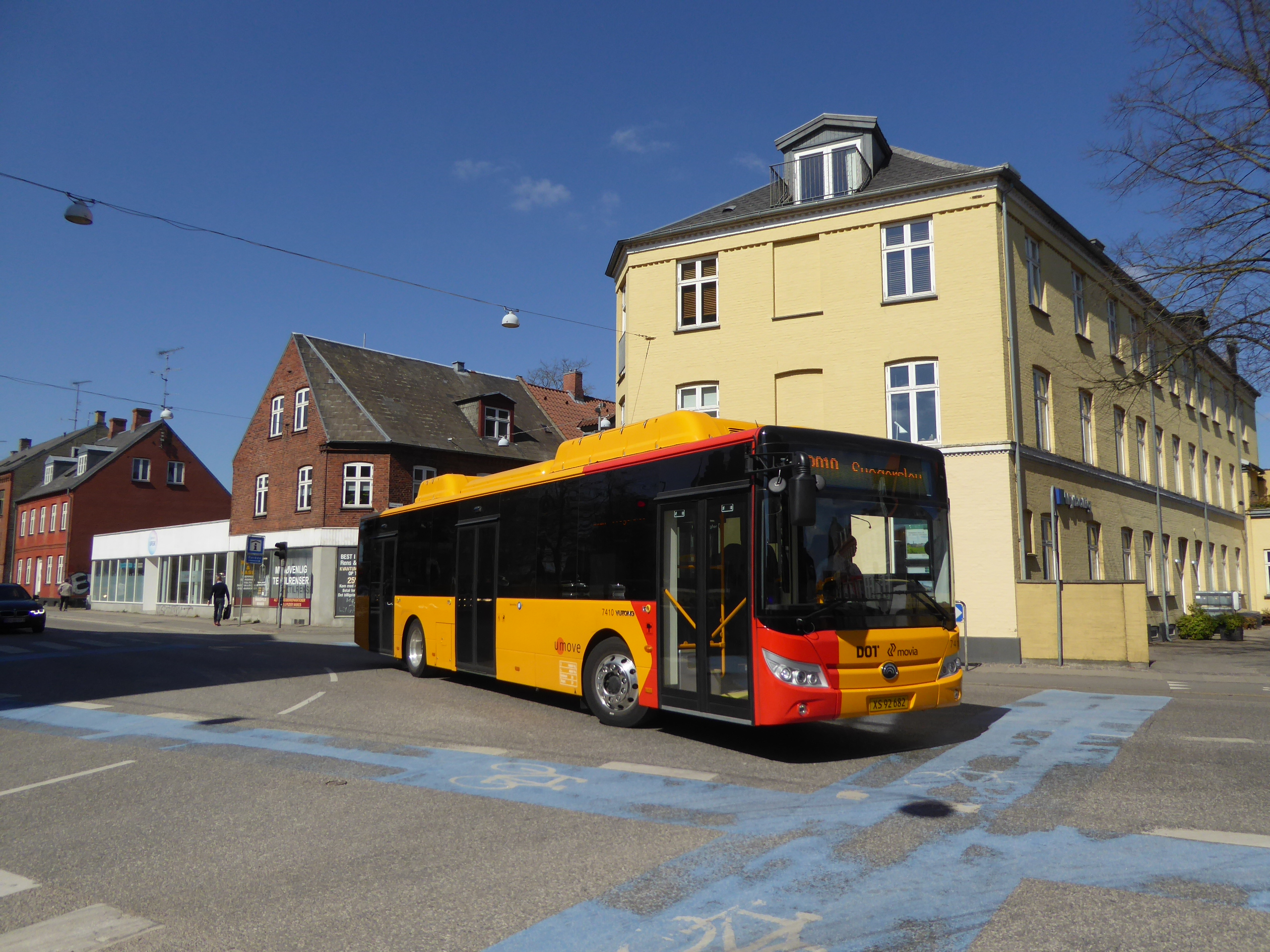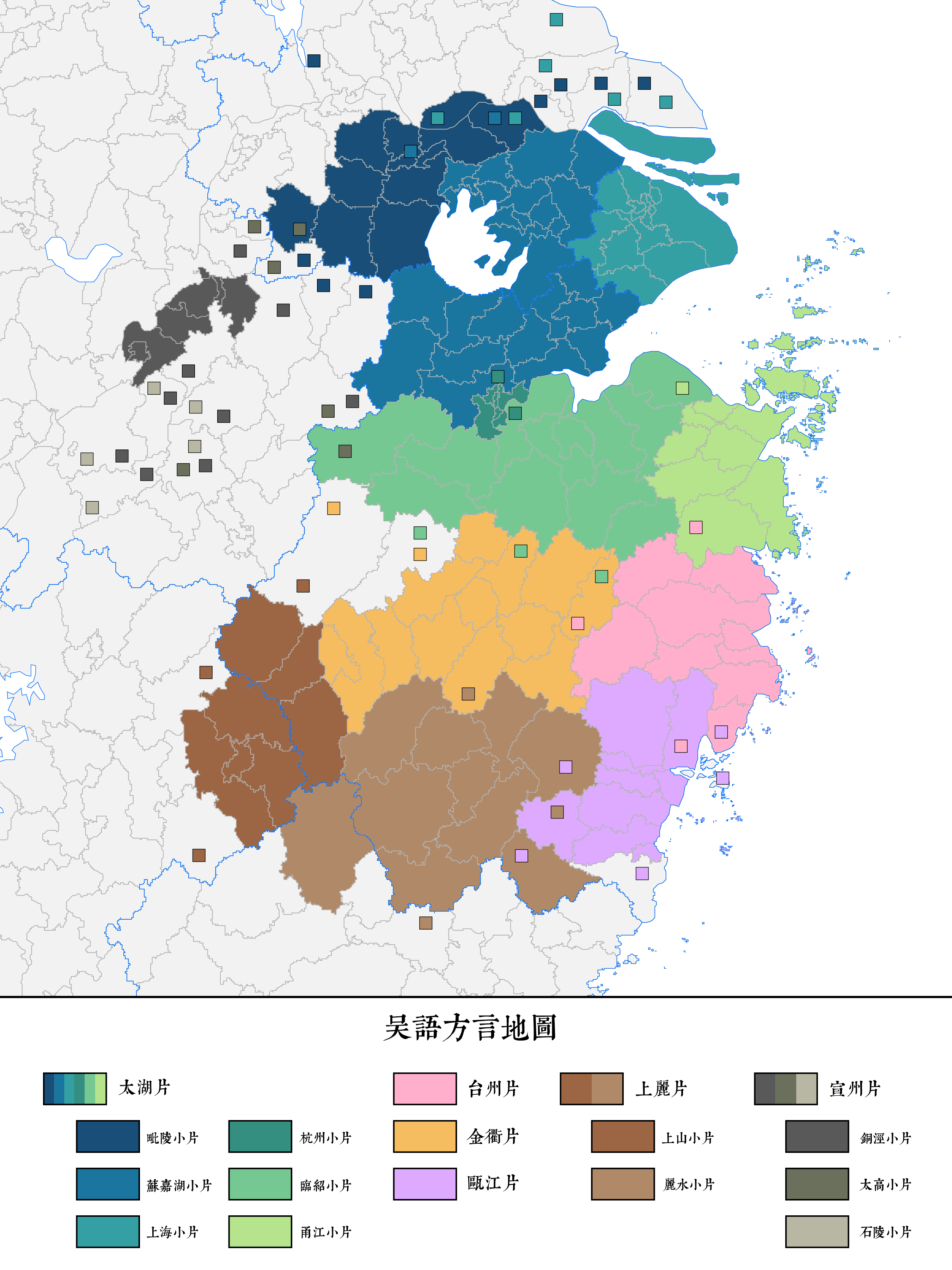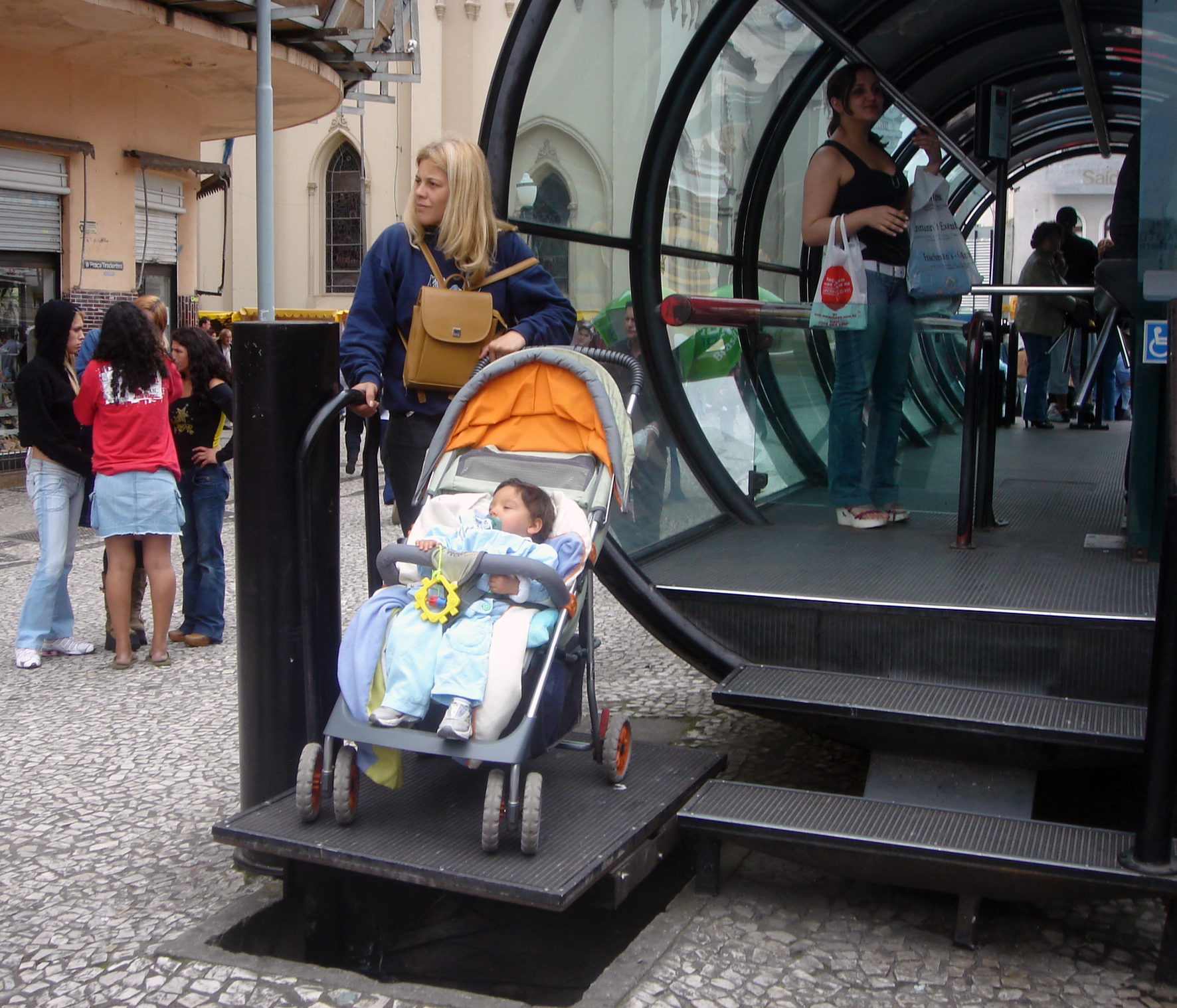|
Yan'an Road Medium Capacity Bus Transit System
The Yan'an Road Medium Capacity Bus Transit System () is a bus rapid transit system operating within Shanghai, China. The network consists of a main route, a partial route and four branch lines, with the main route running between East Yan'an Road & The Bund in Huangpu District, Shanghai, Huangpu District and Shenkun Road Bus Terminal in Minhang District via Yan'an Road. The system is operated by :zh:上海巴士第三公共交通有限公司, Shanghai Bus No.3 Public Transport Co., Ltd., and began trial operations on 1 February 2017. Routes The system consists of the following routes: * Route 71 (:zh:上海公交71路, 71路), running between East Yan'an Road & The Bund and Shenkun Road Bus Terminal. * Partial route 71 (:zh:上海公交71路, 71路区间), running between North Huangpi Road and Fenghong Road. * Route 1250 (:zh:上海公交1250路, 1250路), also known as Branch Line 1 (71路支线1), running between Dingxi Road and Shuangliu Road & Tianshan Road, and connects to ... [...More Info...] [...Related Items...] OR: [Wikipedia] [Google] [Baidu] |
Yutong E10
The Yutong E10, also sold as the longer Yutong E12, is a battery electric single-decker bus manufactured by Yutong in Zhengzhou since 2016 for both Chinese and international bus operators. The Yutong E10 debuted in China in 2016, transporting delegates to meetings of the National People's Congress in Beijing. Exports The Yutong E12 is popular in Denmark. The city of Roskilde was the first in the country to receive Yutong buses in 2019, replacing its diesel bus fleet with 20 E12s. The cities of Copenhagen, Bergen and Odense, who all have bus services run by Keolis soon followed, with each city receiving deliveries of Yutong buses throughout 2020 and 2021. Keolis have also tested a Yutong E12 in the French city of Orléans. 100 Yutong E12s were ordered for bus operators in Santiago de Chile in 2018, as part of a scheme seeking to electrify the city's bus network by 2050, while Singapore's Land Transport Authority took delivery of 20 E12s as part of an order of 60 electric singl ... [...More Info...] [...Related Items...] OR: [Wikipedia] [Google] [Baidu] |
Overhead Line
An overhead line or overhead wire is an electrical cable that is used to transmit electrical energy to electric locomotives, trolleybuses or trams. It is known variously as: * Overhead catenary * Overhead contact system (OCS) * Overhead equipment (OHE) * Overhead line equipment (OLE or OHLE) * Overhead lines (OHL) * Overhead wiring (OHW) * Traction wire * Trolley wire This article follows the International Union of Railways in using the generic term ''overhead line''. An overhead line consists of one or more wires (or rails, particularly in tunnels) situated over rail tracks, raised to a high electrical potential by connection to feeder stations at regular intervals. The feeder stations are usually fed from a high-voltage electrical grid. Overview Electric trains that collect their current from overhead lines use a device such as a pantograph, bow collector or trolley pole. It presses against the underside of the lowest overhead wire, the contact wire. Current colle ... [...More Info...] [...Related Items...] OR: [Wikipedia] [Google] [Baidu] |
Shanghainese
The Shanghainese language, also known as the Shanghai dialect, or Hu language, is a variety of Wu Chinese spoken in the central districts of the City of Shanghai and its surrounding areas. It is classified as part of the Sino-Tibetan language family. Shanghainese, like the rest of the Wu language group, is mutually unintelligible with other varieties of Chinese, such as Mandarin. Shanghainese belongs a separate group of the Taihu Wu subgroup. With nearly 14 million speakers, Shanghainese is also the largest single form of Wu Chinese. Since the late 19th century it has served as the lingua franca of the entire Yangtze River Delta region, but in recent decades its status has declined relative to Mandarin, which most Shanghainese speakers can also speak. Like other Wu varieties, Shanghainese is rich in vowels and consonants, with around twenty unique vowel qualities, twelve of which are phonemic. Similarly, Shanghainese also has voiced obstruent initials, which is rare outsi ... [...More Info...] [...Related Items...] OR: [Wikipedia] [Google] [Baidu] |
Standard Chinese
Standard Chinese ()—in linguistics Standard Northern Mandarin or Standard Beijing Mandarin, in common speech simply Mandarin, better qualified as Standard Mandarin, Modern Standard Mandarin or Standard Mandarin Chinese—is a modern standardized form of Mandarin Chinese that was first developed during the Republican Era (1912‒1949). It is designated as the official language of mainland China and a major language in the United Nations, Singapore, and Taiwan. It is largely based on the Beijing dialect. Standard Chinese is a pluricentric language with local standards in mainland China, Taiwan and Singapore that mainly differ in their lexicon. Hong Kong written Chinese, used for formal written communication in Hong Kong and Macau, is a form of Standard Chinese that is read aloud with the Cantonese reading of characters. Like other Sinitic languages, Standard Chinese is a tonal language with topic-prominent organization and subject–verb–object (SVO) word order. Co ... [...More Info...] [...Related Items...] OR: [Wikipedia] [Google] [Baidu] |
Passenger Information System
A passenger information system, or passenger information display system, is an automated system for supplying users of public transport with information about the nature and the state of a public transport service through visual, voice or other media. It is also known as a customer information system or an operational information system. Among the information provided by such systems, a distinction can be drawn between: * Static or schedule information, which changes only occasionally and is typically used for journey planning prior to departure. * Real-time information, derived from automatic vehicle location systems and changes continuously as a result of real-world events, which is typically used during the course of a journey (primarily how close the service is running to time and when it is due at a stop, as well as incidents that affect service operations, platform changes, etc.). Static information has traditionally been made available in printed form though route net ... [...More Info...] [...Related Items...] OR: [Wikipedia] [Google] [Baidu] |
Accessibility
Accessibility is the design of products, devices, services, vehicles, or environments so as to be usable by people with disabilities. The concept of accessible design and practice of accessible development ensures both "direct access" (i.e. unassisted) and "indirect access" meaning compatibility with a person's assistive technology (for example, computer screen readers). Accessibility can be viewed as the "ability to access" and benefit from some system or entity. The concept focuses on enabling access for people with disabilities, or enabling access through the use of assistive technology; however, research and development in accessibility brings benefits to everyone. Accessibility is not to be confused with usability, which is the extent to which a product (such as a device, service, or environment) can be used by specified users to achieve specified goals with effectiveness, efficiency, convenience, or satisfaction in a specified context of use. Accessibility is also s ... [...More Info...] [...Related Items...] OR: [Wikipedia] [Google] [Baidu] |
Articulated Bus
An articulated bus, also referred to as a banana bus, bendy bus, tandem bus, vestibule bus, wiggle wagon, stretch bus, or an accordion bus, (either a motor bus or trolleybus) is an articulated vehicle used in public transportation. It is usually a single-decker, and comprises two or more rigid sections linked by a pivoting joint (articulation) enclosed by protective bellows inside and outside and a cover plate on the floor. This allows a longer legal length than rigid-bodied buses, and hence a higher passenger capacity (94–120), while still allowing the bus to maneuver adequately. Due to their high passenger capacity, articulated buses are often used as part of bus rapid transit schemes, and can include mechanical guidance. Articulated buses are typically long, in contrast to standard rigid buses at long. The common arrangement of an articulated bus is to have a forward section with two axles leading a rear section with a single axle, with the driving axle mounte ... [...More Info...] [...Related Items...] OR: [Wikipedia] [Google] [Baidu] |
Yutong
Yutong (officially Zhengzhou Yutong Group Co., Ltd.) is a Chinese manufacturer of commercial vehicles, especially electric buses, headquartered in Zhengzhou, Henan. Yutong also covers areas of construction machinery, real estate, and other investment businesses. As of 2016 it was the largest bus manufacturer in the world by sales volume. Background Yutong has four manufacturing bases for conventional buses, new energy buses, specialized vehicles, parts and components, and has the single largest bus manufacturing plant in the world. As of 2018, Yutong has a complete 5m-18m product lineup consisting of over 140 series of buses and coaches. In 2017, its sales volume of large and medium-sized buses reached 67,268 units, among them 24,865 units are new energy buses. From 2005 to 2017, Yutong buses have been exported to over 30 countries and regions, including France, UK, Australia, South Africa, Cuba, Venezuela, Chile, Russia, Saudi Arabia, Taiwan (Republic of China) and so on, ... [...More Info...] [...Related Items...] OR: [Wikipedia] [Google] [Baidu] |
Low-floor Bus
A low-floor bus is a bus or trolleybus that has no steps between the ground and the floor of the bus at one or more entrances, and low floor for part or all of the passenger cabin. A bus with a partial low floor may also be referred to as a low-entry bus or seldom a flat-floor bus in some locations. Low floor refers to a bus deck that is accessible from the sidewalk with only a single step with a small height difference, caused solely by the difference between the bus deck and sidewalk. This is distinct from high-floor, a bus deck design that requires climbing one or more steps (now known as step entrance) to access the interior floor that is placed at a higher height. Being low-floor improves the accessibility of the bus for the public, particularly the elderly and people with disabilities, including those using wheelchairs and walkers. Almost all are rear-engine, rear-wheel-drive layout with no drive shaft. Configuration Low-floor and low-entry buses Low-floor buses are ge ... [...More Info...] [...Related Items...] OR: [Wikipedia] [Google] [Baidu] |
Hongqiao, Minhang District
Hongqiao (; Shanghainese The Shanghainese language, also known as the Shanghai dialect, or Hu language, is a variety of Wu Chinese spoken in the Districts of Shanghai, central districts of the Shanghai, City of Shanghai and its surrounding areas. It is classified as ...: ghon1jiau1) is a town in Minhang District, in the western suburbs of Shanghai. , it has 33 residential communities (居委会) under its administration. See also * List of township-level divisions of Shanghai References External links Towns in Shanghai Minhang District {{Shanghai-geo-stub ... [...More Info...] [...Related Items...] OR: [Wikipedia] [Google] [Baidu] |

.jpg)





_TP2726_@_Curtin_University_Bus_Station_(cropped).jpg)